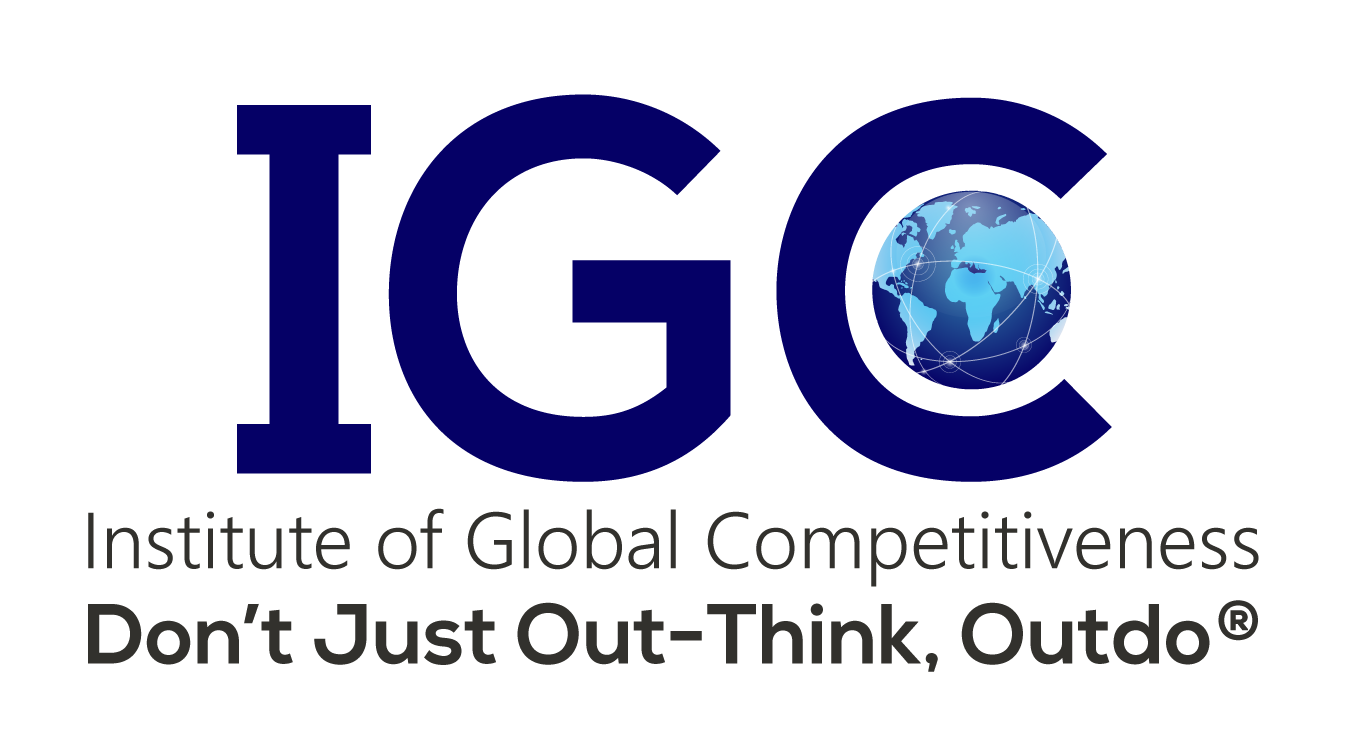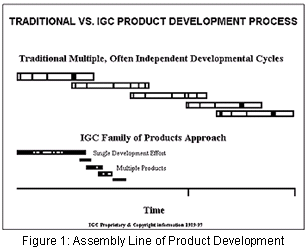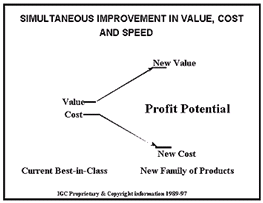

In today’s globally competitive business environment, both the quality and the pace of new product development stand out as key success factors across industries and markets. The global leaders of the 21st century will be those with increasingly “smarter” methods of product development resulting in a several fold improvement in innovation.
Most firms do not set themselves apart from their competition on either customer value, speed or cost. Wouldn’t it be great to have an assembly line of product development that continuously cranks out new products with dramatic improvements in customer value, speed and cost simultaneously? How about leaving competition at the starting blocks as you rapidly introduce successive waves of better and better new products?
An assembly line of product development sounds good, but how is it accomplished? An important first step is greatly reducing the redundant resources and time spent in each new and often independent product development effort. A systematic single design effort can drive the development of multiple products – a family of products, which spans global markets and customers (see Figure 1). Examples of product families in a broad range of manufacturing and service industries include families of cardiographs, medical scanners, sawmill machinery, construction equipment, instruments, refrigeration equipment, financial services, food services etc.
Generally, companies completely miss the boat by planning for the short term and by ignoring the commonality and synergism across customer segments and markets. By expanding the thinking to include the needs of a multiple segments for the next 5-10 years, we can establish a platform or base product driven by common customer demands. A family of products will be born from a single development effort. This would greatly reduce the number of products and at the same time increase the revenue potential through expanded and new markets.

Assessing their companies’ potential for continuous reinvention, CEOs also must consider three other factors: ultimate customer experience, unique business model and breakthrough innovation capability. In terms of customer experience, Dell and eBay clearly score the highest, while Wal-Mart and Home Depot face significant hurdles. As for business model, Dell, eBay and Southwest have the edge, while Wal-Mart and particularly Home Depot are losing the advantage of uniqueness; Starbucks can easily be challenged. All of them can and must improve their continuous breakthrough innovation capability.
Customer sessions are a thorough and scientific way to gather customer inputs and priorities. A customer session is an opportunity for the cross-functional product development team to share its product features and hundreds of additional differentiated feature ideas with a group of key customers. The customer participants are selected based on their influence, leadership and experience in the industry. Sessions are designed to allow customers to prioritize these ideas. These priorities are vital to creating the product family. The team can then select the “Vital Few” priorities to create dramatic market differentiation. Focusing on the vital few customer and market requirements provides clear-cut direction to the team and eliminates confusion and late design changes.
The team develops multiple design concepts by thinking out of the box, considering use of different technologies, brainstorming improvements in current designs, analyzing competitors’ products and also using creativity tools and techniques like TRIZ. These concepts are then evaluated using enhanced Pugh’s concept selection techniques, which is setup in a matrix format. The concepts are compared using a Best-in-class concept as a reference and rating each concept as better, worse or the same as this reference. The evaluation goes beyond just technical evaluation. Each concept is evaluated against current as well as future prioritized customer values and at the same time against various business costs. The simultaneous evaluation against customer value and cost allows achieving higher value/cost ratio!
The best concept(s) with highest ratings from the evaluation are selected as potentials for a base product. Based on time to market and other criteria, a concept is selected as a base product for the family. Not all of the high priority customer values are incorporated in the base product. Since we have the advantage of knowing the customer priorities up front, the implementation of customer values is planned in phases so that we can gradually serve the entire market. The goal for the Family of Products is to have as much “Market Commonality” as we can and at the same time have “Design Commonality” within the family. Impact on the Bottom Line
This logical approach to doing new product development affects the bottom line in many different ways by significantly improving revenues, market share and profitability. Table 1 shows a summary of results we have observed in wide variety of industries.

Any improvement in the value to cost ratio directly impacts the profit potential (See Figure 2). A product development effort must concentrate on significantly improving customer value and reducing the cost (i.e., improve value to cost ratio 2X to 5X. The approach described here allows the team to think about the customer values for the next 5-10 years during up-front planning while reducing cost to the business. The implementation of customer values is carefully planned for first product and the subsequent products. Timing the release of new product features will excite the customers and confuse the competition while greatly increasing the revenue and profit stream to the company.
As shown in Table 1, this family of products approach allows subsequent products to be produced in a fraction of time compared to the traditional linear process with many independent development efforts. In translation, this means that the redundant up-front design and planning is eliminated for subsequent products in the family. Complete planning is done only once for the entire family. The time to market reduction achieved is several orders of magnitude larger than any other approaches to improving product development.
A Family of Cardiographs and Stress Systems was planned and developed using this approach. The first product release took 25% less time than traditional product development. Since the planning was done for a family, subsequent product releases took only a few months vs. a few years! The value/cost ratio increased by 3X as measured in terms of image quality and ease of use which were the major customer value drivers for the product. Some of the techniques used during implementation of this integrated approach included cross-functional teams, extended team to create awareness and spread the enthusiasm in the entire company, strategic partnerships with customers, customer sessions, market driven innovation and definition, concept definition, design for simplicity, manufacturability and many others.
Any approach towards product development for the future should focus on improving customer value, speed and cost simultaneously in order to achieve success in the global market place. Developing a family of products as described not only does this, but it creates a family of enthusiastic employees too. This approach lights the path of success in the next century, while improving the bottom line dramatically.